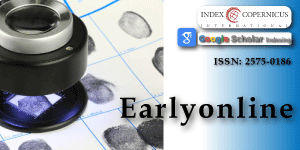Macroscopic Changes Observed after Burning in Incised Wounds on Bones caused by Sharp and Penetrating Instruments
Main Article Content
Abstract
Background: Stab and incised wounds are frequently encountered in forensic practice. Burned skeletal remains often complicate the evaluation of such injuries, making it important to understand how fire alters cut marks on bones. This study aimed to investigate the macroscopic changes of sharp-force trauma on bones after exposure to high temperatures.
Methods: Three bovine humeri were incised with a 32 cm non-serrated kitchen knife. The length, width, direction, and interrelationships of each incision were measured with a forensic scale, photographed, and recorded. The bones were then burned in open-air conditions using oak wood, without accelerants, at 460 °C –570 °C for 60 minutes. Following combustion, the incisions were remeasured, and pre- and post-burning characteristics were compared statistically.
Results: Despite advanced thermal destruction, most incisions remained macroscopically visible. Heat exposure caused significant increases in incision length and width (p < 0.05). Linear fissures radiating from the cuts were observed, and the cut margins appeared sharper and drier after burning. In one specimen, thermal fractures disrupted the evaluation of a distal incision.
Conclusion: Sharp-force trauma marks on bones are not completely obscured by fire and may even become more pronounced. However, heat-related expansion of cut dimensions can lead to overestimation of blade size. These findings emphasize the need for caution in interpreting burned skeletal remains and highlight the importance of further research with larger sample sizes to improve forensic accuracy.
Article Details
Copyright (c) 2025 Akrep A

This work is licensed under a Creative Commons Attribution 4.0 International License.
Vakfı U. Türkiye Armed Violence Map 2022 Report. 2022. Available from: https://umut.org.tr
Isenhour JL, Marx J. Advances in abdominal trauma. Emerg Med Clin North Am. 2007;25(3):713–33. Available from: https://doi.org/10.1016/j.emc.2007.06.002
Hürriyet. Turkey's violence map. 2016.
Doğan KH, Demirci Ş, Koç S. Killed first, burned after: attempting to eliminate victims of homicide by burning. 2011;16(2):49–53. Available from: https://www.researchgate.net/publication/281558241
Symes SA, L'Abbé EN, Chapman EN, Wolff I, Dirkmaat DC. Interpreting traumatic injury to bone in medicolegal investigations. In: Dirkmaat DC, editor. A Companion to Forensic Anthropology. Chichester, West Sussex: Wiley-Blackwell. 2012;340–89. Available from: https://www.researchgate.net/publication/260835132
Borusiewicz R, Zięba-Palus J, Zadora G. The influence of the type of accelerant, type of burned material, time of burning, and availability of air on the possibility of detection of accelerant traces. Forensic Sci Int. 2006;160(2–3):115–26. Available from: https://doi.org/10.1016/j.forsciint.2005.08.019
Grévin G, Bailet P, Quatrehomme G, Ollier A. Anatomical reconstruction of fragments of burned human bones: a necessary means for forensic identification. Forensic Sci Int. 1998;96(2–3):129–34. Available from: https://doi.org/10.1016/s0379-0738(98)00115-7
Collini F, Amadasi A, Mazzucchi A, Porta D, Regazzola VL, Garofalo P, et al. The erratic behavior of lesions in burnt bone. J Forensic Sci. 2015;60(5):1290–4. Available from: https://doi.org/10.1111/1556-4029.12794
Macoveciuc I, Márquez-Grant N, Horsfall I, Zioupos P. Sharp and blunt force trauma concealment by thermal alteration in homicides: an in-vitro experiment for methodology and protocol development in forensic anthropological analysis of burnt bones. Forensic Sci Int. 2017;275:260–71. Available from: https://doi.org/10.1016/j.forsciint.2017.03.014
Bradtmiller B, Buikstra JE. Effects of burning on human bone microstructure: a preliminary study. J Forensic Sci. 1984;29(2):535–40. Available from: https://pubmed.ncbi.nlm.nih.gov/6726157/
Correia PM. Fire modification of bone: a review of the literature. In: Haglund WD, Sorg MH, editors. Forensic taphonomy: the postmortem fate of human remains. 1997;275–93. Available from: https://www.researchgate.net/publication/313078830
Glassman DM, Crow R. Standardization model for describing the extent of burn injury to human remains. J Forensic Sci. 1996;41(1):152–4. Available from: https://pubmed.ncbi.nlm.nih.gov/8934717/
Ubelaker DH. The forensic evaluation of burned skeletal remains: a synthesis. Forensic Sci Int. 2009;183(1–3):1–5. Available from: https://doi.org/10.1016/j.forsciint.2008.09.019
Herrmann NP, Bennett JL. The differentiation of traumatic and heat-related fractures in burned bone. J Forensic Sci. 1999;44(3):461–9. Available from: https://pubmed.ncbi.nlm.nih.gov/10408102/
Dempster WT, Liddicoat RT. Compact bone is a non-isotropic material. In: Proceedings of the Third U.S. National Congress of Applied Mechanics; 1952 Jun 18–21; Purdue University. New York: ASME. 1952.;123–33. Available from: https://doi.org/10.1002/aja.1000910302
Evans FG. Mechanical Properties of Bone. Springfield (IL): Charles C. Thomas. 1973;316. Available from: http://www.oandplibrary.org/al/1969_01_037.asp
Smith J, Walmsley R. Factors affecting the elasticity of bone. J Anat. 1959;93(Pt 4):503. Available from: https://pubmed.ncbi.nlm.nih.gov/13832048/
Townsend PR, Rose RM, Radin EL. Buckling studies of single human trabeculae. J Biomech. 1975;8(3–4):199–201. Available from: https://doi.org/10.1016/0021-9290(75)90025-1
Watson JT, McClelland JA. Distinguishing Human from Non-Human Animal Bone: A Guide for Non-Specialists. Tucson (AZ): Arizona State Museum, University of Arizona. 2018;35. Available from: https://statemuseum.arizona.edu/sites/default/files/Distinguishing%20Human%20From%20Animal%20Bone%20%28Watson%20and%20McClelland%202018%29.pdf
Ekizoğlu O, KS. Yaralar. In: Forensic Medicine in Primary Care [Internet]. Istanbul: Istanbul Medical Chamber. 2011;65–7.
Aksoy E, ÇA, Ege B, Günaydın G, İnanıcı MA, Karali H, Karagöz M, Ötker C, Yemişçigil A. Forensic Traumatology. 1999. Available from: https://www.ttb.org.tr/eweb/adli/4.html

